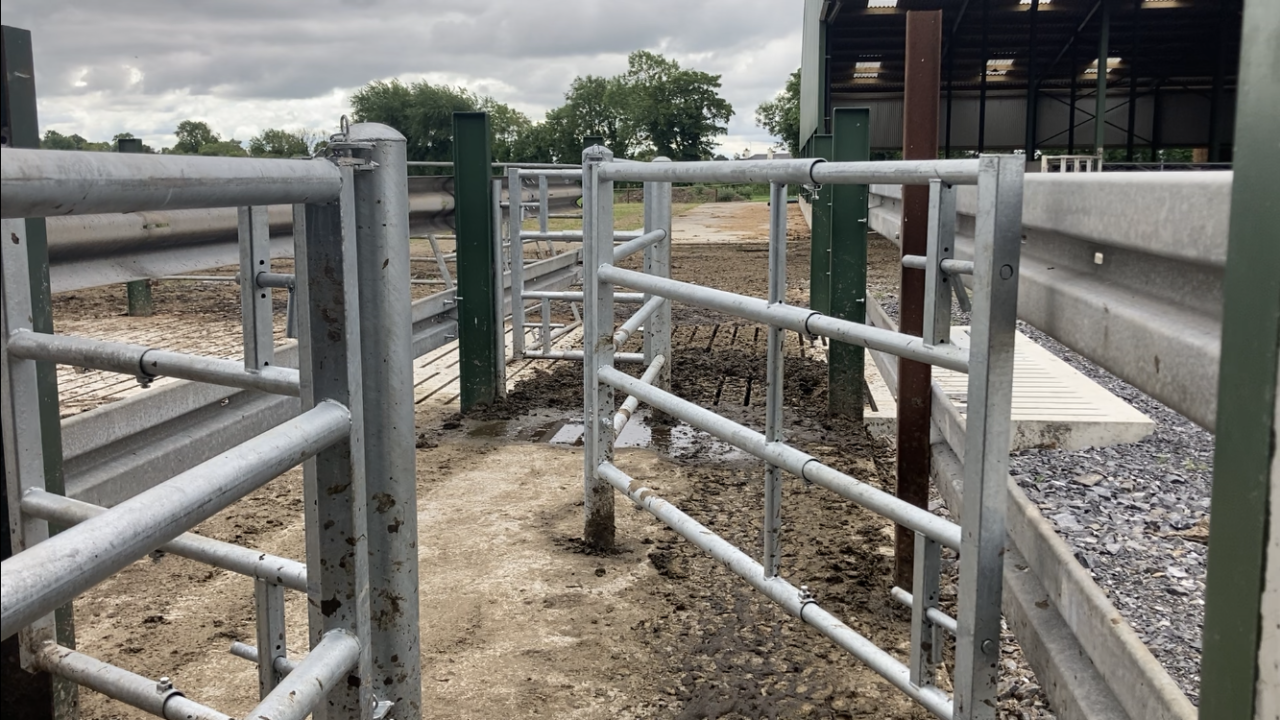As the end of the grazing season approaches, farmers should be considering foot bathing their cows to protect against winter lameness.
Cows heading into this period with chronic lameness should be considered for culling; however, cows with slight lameness and even cows that have not yet displayed signs of lameness should be foot bathed.
Lameness can cause catastrophic economic losses to farms at this time of the year, as feed intakes drop causing incorrect body condition scoring (BCS) for spring calvers and lost milk production for winter milkers.
Lameness can really be a plague during the housing period as animals struggle on hard concrete for long periods of time, especially in over crowded houses, as well as cows being prone to digital dermatitis (mortellaro) in unhygienic conditions.
Typically, there are two main types of lameness in dairy herds, with most cows taking physical damage to the foot initially (for example, white line disease), which is often followed by infectious damage to the cow’s hoof.
A good foot bathing routine is essential, as it can help heal the physical damage and prevent any inflectional damage by reducing the spread of infection.
Foot bath
Lameness typically begins as an issue when cows are travelling long distances on rough roadways and hard surfaces when out grazing.
This typically lead to infectious lameness, which spreads like wildfire indoors. It is very difficult to stop the spread, therefore it is important to treat cows while they are still out grazing.
Foot baths can help fight issues such as mortellaro, sole ulcers, foul in the foot, and toe necrosis before the housing period.
In order to foot bath the cows effectively, a farmer needs to ensure that there is good cow flow through the foot bath.
It should be ideally positioned permanently along the exit race from the milking parlour.
Good cow flow can be achieved by having a straight exit race, with no blind or sharp turn in the run up.
It is also recommended to have no step up or step down to the bath, which is works most efficiently when cows can maintain their stride.
Farmers are advised that water baths before a foot bath solution are not recommended, as a cow will get freaked by the first bath, and then dung in the second (solution) bath.
Cows will also dung in foot baths that are too long, and jump over baths that are too short, effectively not dipping all feet in a sufficient manner.
Therefore, a farmer should ensure that a foot bath is as follows:
- Minimum of 700-850mm wide to allow for one cow at a time with good flow;
- 3m x 850mm works very well for herds up to 250 cows;
- Herds larger than 250 cows should have a bath that is at least 2m wide;
- Length should ideally be 2.5-3m;
- Solution depth should be 100-125mm.
If issues such as mortellaro are present within the herd, farmers are advised to try and get their cows through the foot bath at least once a week.
Solution
Once you have a well-designed bath in place, the solution must be added at a recommended rate of 1L/cow (100 cows need 100L).
However, it is important to remember that lame cows in the herd are usually at the back and will be the last through the bath.
Therefore, the bath should be regularly emptied and cleaned before adding additional solution.
For instance, a foot bath can hold 100L, but if the herd is 150 head, the bath must be changed after 100 cows and 50L of fresh solution added.
A lot of farmers often choose to only foot bath the last few rounds of the herd where the lame cows typically are, as they feel the bath becomes less effective as traffic increases.
Copper sulphate and formalin are commonly and effectively used in foot baths, as antibiotics are not licensed for use in footbaths due to microbial resistance.
The luxury to have would be an automatic foot bath, as they can supply different rates of solution, as well as empty and refill automatically as cows pass through, however they do come with a high capital cost.

